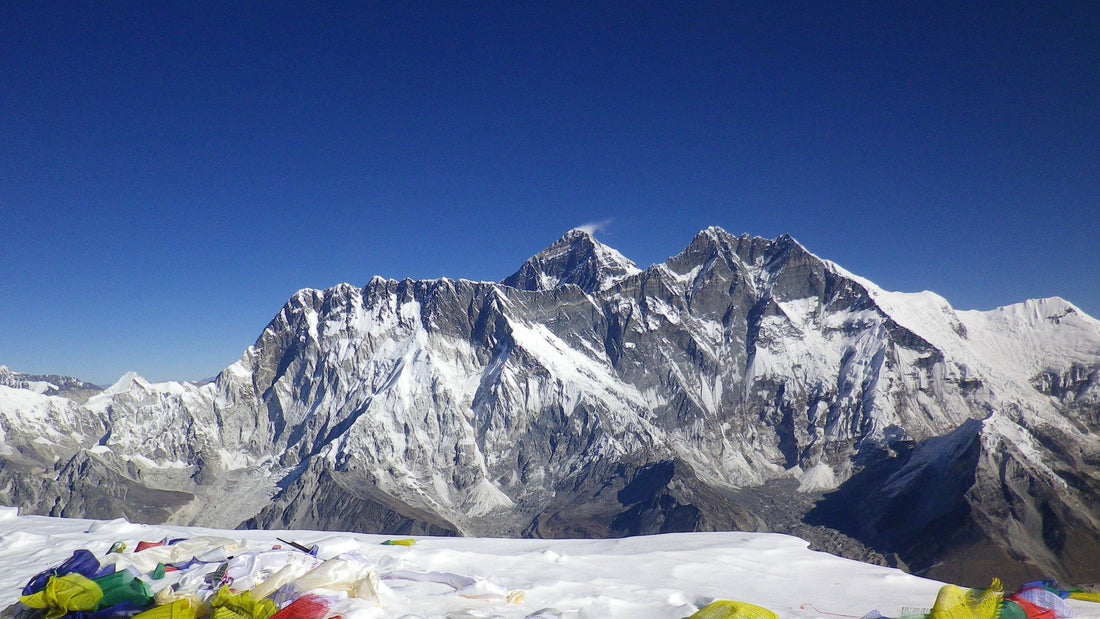
How one mountain changed everything
Share
It sounds so cliched to talk about the ‘transformative power’ of mountains. But there is something about the physical and mental challenge of a big trip that has a profound impact on your self-belief, which creates ripples far beyond the experience itself. Doing hard things builds resilience. Our founder Ronnie has experienced this first hand.
'As a distinctly average climber, I had progressed from hiking and rock climbing to winter and then Alpine mountaineering, but I always aspired to climb bigger things. Back in 2018 I tried to organise an all-female expedition to the Andes, but failed to find more than two other women who felt they had the skills and confidence to take it on. (We went anyway, as a mixed team of six, and had a fantastic trip.) This planted the question in my mind – why is it so hard to find other women who want to climb in higher, colder, or more remote places?
A few years later, I headed to the Himalayas for the first time to try Ama Dablam (6812m). Without knowing anyone else who was interested, I had no choice but to go as an individual on an organised trip. I knew it was going to be a huge physical challenge, and one that I probably wouldn’t get a second shot at. So I threw myself into preparing every way I knew how: physically, mentally, and practically.

Ama Dablam as seen from base camp
When I started gathering my clothing and equipment for the trip, I knew this was an area where I had a natural advantage. I had worked as an outdoor clothing designer for over a decade at this point, and yet I still couldn’t find the clothing that met my needs. I’m average height for a woman, with curves in all the usual places. But I couldn’t find warm insulated pants that fitted me, or a really warm down jacket that wasn’t either a men’s size that drowned me, or an overly-shaped and under-filled women’s model with the most useful features left off.
At this point, I took matters into my own hands. I designed the jacket I needed and got a sample made, and I sewed my own down pants (which confirmed I am better at designing than sewing!). Making everything as light as possible helped keep my pack weight down, because I knew I needed every little bit of help I could get on the mountain.
Climbing Ama Dablam was the single hardest thing I have ever done, both physically and mentally. During the 18 hour summit push, I only ate three jelly babies and drank 200ml of water; I didn’t pee until we got back to camp. The error in my clothing system was that I couldn’t easily undo the layers on my legs while keeping my harness on. But I survived, and learnt of lot of useful things along the way - like making ¾ length down trousers helps keep weight down, but your feet get colder!

On the summit at 6812m, enjoying the view of Everest and beyond.
It wasn’t until after the expedition that I realised it was so much more than a physical achievement; the mental side meant I had to tap into an inner strength I didn’t know I had. Ultimately, climbing that mountain re-shaped the course of my life.
It was this experience, and the obvious lack of appropriate clothing available for women, that inspired me to found Vertura. It didn’t happen overnight, but preparing for and succeeding on Ama Dablam gave me the confidence to tackle my biggest challenge yet: building my own business, on my own terms, to serve women like you and me.
My experiences with other women in the mountains helped me realise there are plenty of us out there who are keen and motivated, but sometimes we need a little more encouragement to believe in our capabilities. I hope that creating functional clothing for women empowers you to take on challenges that can transform your life too.'
